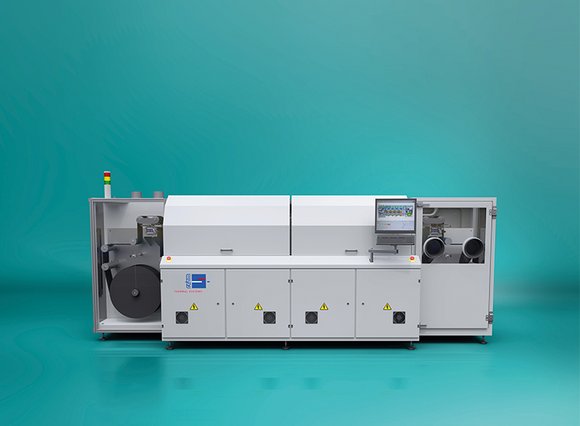Higher energy density, shorter charging time, longer service life, improved safety characteristics as well as environmentally friendly and resource-saving production are all required for the next generation of batteries for electric mobility. Solid state batteries are a promising concept for achieving these goals. The flammable liquid electrolyte is replaced by a solid body, which ensures safe operation even without cooling. This also prevents leakage of safety-critical and toxic substances from the outset, thereby reducing the safety measures which are required for conventional Li-ion batteries. Another advantage is the high energy density. In terms of electric mobility, this means that a higher range can be achieved with the same installation space, or that less installation space is required for the same range, thereby saving even more weight. In addition to use in the field of electric mobility, the improved safety properties and increased energy density also offer advantages for any applications in which conventional Li-ion batteries can be replaced by solid state batteries.
As part of the ARTEMYS research project funded by the Federal Ministry of Education and Research (BMBF), Rehm is working together with various research institutes and industrial partners, including the BMW Group, BASF SE and Thyssen Krupp System Engineering GmbH, to develop these next generation batteries. Suitable process technologies are being developed to produce, among other things, fully ceramic solid state batteries. With this technology, both the cathodes and the electrolyte consist of oxidic or sulfidic materials, which are developed by the project partners. These batteries not only function without any liquid components but also without any polymer content. Rehm is working on the cooperative project to develop scalable production solutions for the drying and sintering of oxide composite cathodes and solid electrolyte separators.
Technology for conventional Lithium-Ion battery packs
Rehm has many years of experience with drying processes for various industrial applications. This also includes film drying. Drying the electrodes is an important step in the production process for manufacturing lithium-ion batteries. With its reel-to-reel drying system RDS Battery, Rehm provides a concept that can be used to achieve the drying temperature via infrared radiation, convection, or a combination of both heat-transfer mechanisms. The system is primarily designed for research facilities. With the ProtectoXP and ProtectoXC coating systems, Rehm also offers systems that provide solutions for bonding and coating processes for battery system construction and for power electronics.
Furthermore, the Rehm Thermal Systems product portfolio offers additional solutions for the field of power electronics. There is a strong focus on thermal management for the components required for this in order to prevent overheating and any premature failure that may occur as a result of this, even with the heat loss created by the high level of performance. Voids (pores in the soldered joints), in particular, may lead to hot spots. The vacuum option in the soldering process for Rehm systems is increasingly being used here to prevent the negative effects of pore formation. The vacuum option is available with the Vision series convection soldering systems, the Condenso series condensation soldering systems, and the Nexus contact soldering system.
